Patio Sliding Doors: Your Questions Answered
Table of Contents
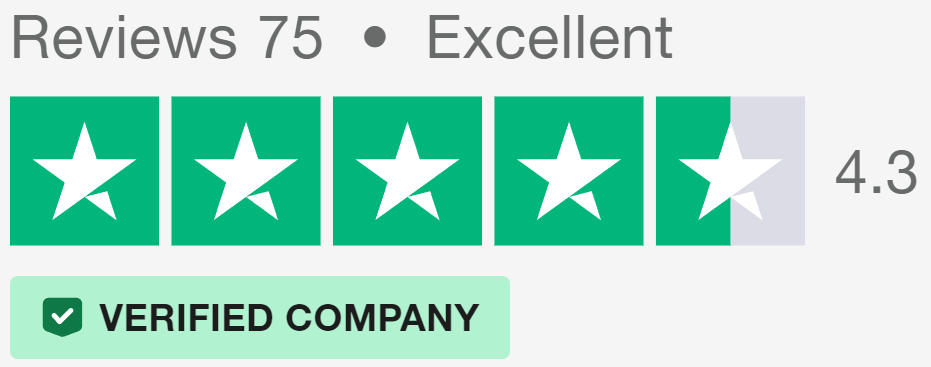
The Basics of Patio Sliding Doors
Patio sliding doors have become a staple in British homes, offering a practical way to connect the indoors with gardens and patios. These doors consist of large glass panels that glide along tracks, allowing for easy access and unobstructed views of the outdoors.
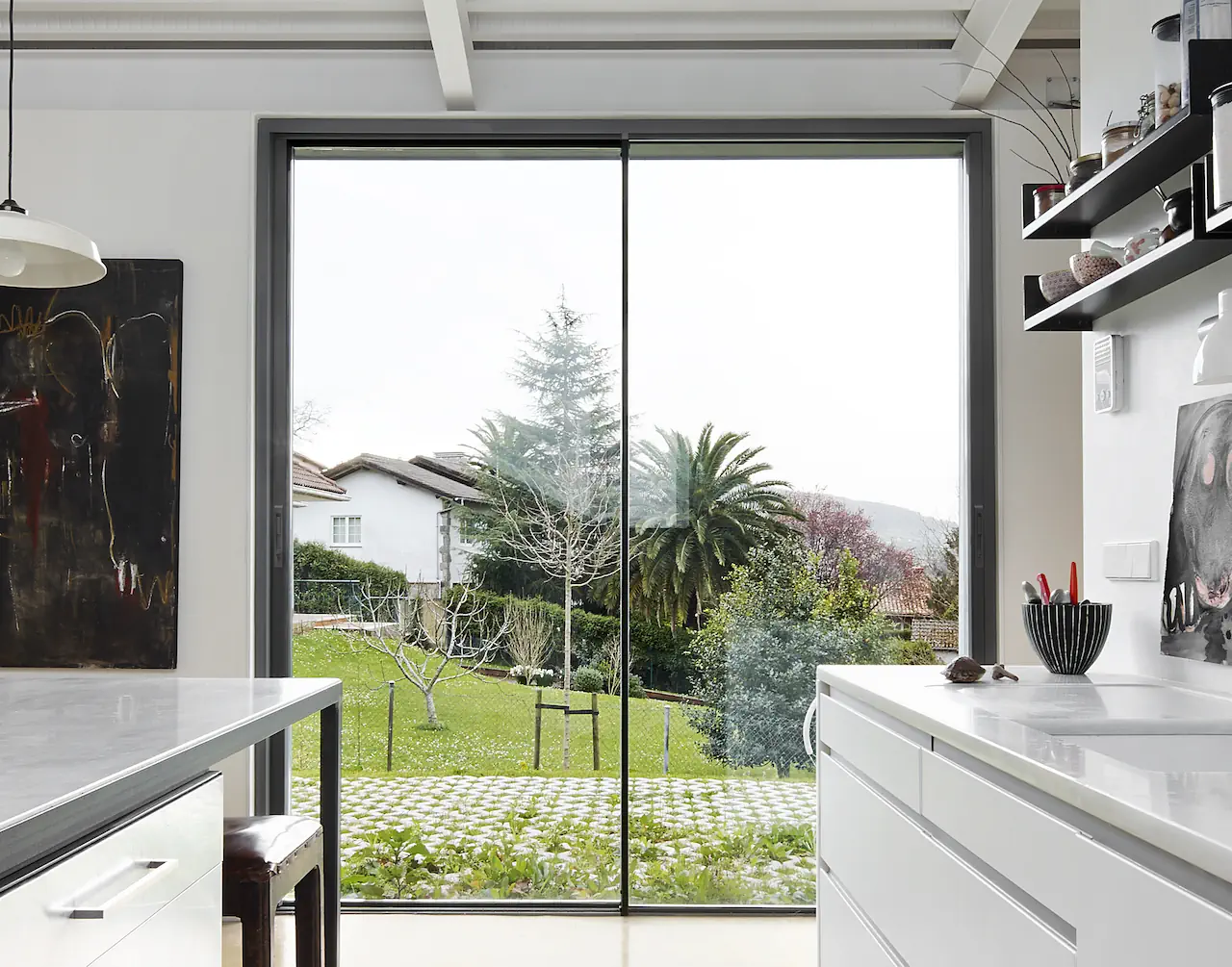
How Patio Sliding Doors Work
The mechanism behind patio sliding doors is straightforward yet effective. Two or more panels sit on rollers within a track system. One panel remains fixed while the others slide horizontally, creating an opening. This design allows for smooth operation and requires minimal space to function.
Track Systems
Modern track systems use durable materials like stainless steel or aluminium. These materials resist corrosion and wear, ensuring long-lasting performance. Some high-end systems feature multi-point rollers, which distribute the door’s weight evenly and reduce the effort needed to open and close them.
Locking Mechanisms
Most models come with multi-point locking systems that secure the door at various points along the frame. This design improves both safety and insulation.
Materials: Glass and Frames
Glass Options
Double-glazed units are standard in most patio sliding doors. These consist of two panes of glass with a gap between them, filled with inert gas. This design improves insulation and reduces noise transmission. For those seeking extra efficiency, triple-glazed options are available, though they come at a higher cost.
Frame Materials
uPVC frames are popular due to their affordability and low maintenance requirements. They offer good insulation and come in a range of colours, including wood-grain effects. However, they may not suit all architectural styles.
Aluminium frames provide strength and slim profiles, allowing for larger glass panels and more light. They’re highly durable and require little upkeep. While traditionally not as insulating as uPVC, modern aluminium frames with thermal breaks offer improved energy efficiency.
Timber frames offer a classic look and excellent insulation properties. They suit both traditional and contemporary homes but require regular maintenance to prevent weathering and warping.
Size Options
Patio sliding doors come in various sizes to fit different openings. Standard widths typically range from 1.5 to 6 metres, with heights between 2 and 3 metres. These dimensions can accommodate most residential needs.
For those with unique requirements, many manufacturers offer bespoke sizing options. This flexibility allows homeowners to create dramatic floor-to-ceiling installations or fit unusual spaces. However, custom sizes often come with a higher price tag and longer lead times.
Large sliding glass patio doors let in more light and provide better views but may affect the room’s thermal efficiency. They also require more substantial supporting structures, which could impact the overall design of your home.
Choosing the Right Style for Your Patio Sliding Doors
Contemporary vs. Traditional Designs
Patio sliding doors come in both modern and classic styles to suit different home aesthetics. Modern sliding doors often feature sleek, minimalist frames that prioritise large glass panels. These doors can create a striking visual impact, especially in newly built or renovated homes.
Traditional styles, on the other hand, tend to incorporate more ornate details and thicker frames. They often mimic the look of French doors while offering the space-saving benefits of sliding mechanisms. These patio slide doors work well in period properties or homes with a more classic feel.
Modern designs with their simpler lines are often easier to clean and maintain. Traditional styles might require more upkeep but can add character to your home.
Framed vs. Frameless Options
Framed patio sliding doors are the most common type. They feature visible frames around each glass panel, providing structure and insulation. These doors offer a wide range of customisation options in terms of frame material, colour, and thickness.
Frameless designs, a newer trend, use thicker glass panels with minimal visible framing. This creates an almost uninterrupted view of the outdoors, giving a sense of openness to your living space. While visually striking, frameless patio sliding doors can be more expensive and may have different insulation properties compared to framed options.
When choosing between framed and frameless, think about your local climate, the direction your doors will face, and how often you’ll use them. Each option has its pros and cons in terms of insulation, maintenance, and durability.
Colour Choices
The colour of your patio sliding doors can have a big impact on both the interior and exterior appearance of your home, for obvious reasons. White sliding patio doors remain a popular choice due to their clean look and ability to match most home styles. It’s particularly effective in smaller spaces, as it can make rooms appear larger and brighter.
However, don’t shy away from bolder colours. Black sliding patio doors can create a striking contrast, especially when paired with light-coloured walls. They’re particularly effective in modern, minimalist interiors. Grey is another trendy option, offering a softer alternative to black while still providing a contemporary feel.
When choosing between framed and frameless, think about your local climate, the direction your doors will face, and how often you’ll use them. Each option has its pros and cons in terms of insulation, maintenance, and durability.
Designing Your Space Around Patio Sliding Doors
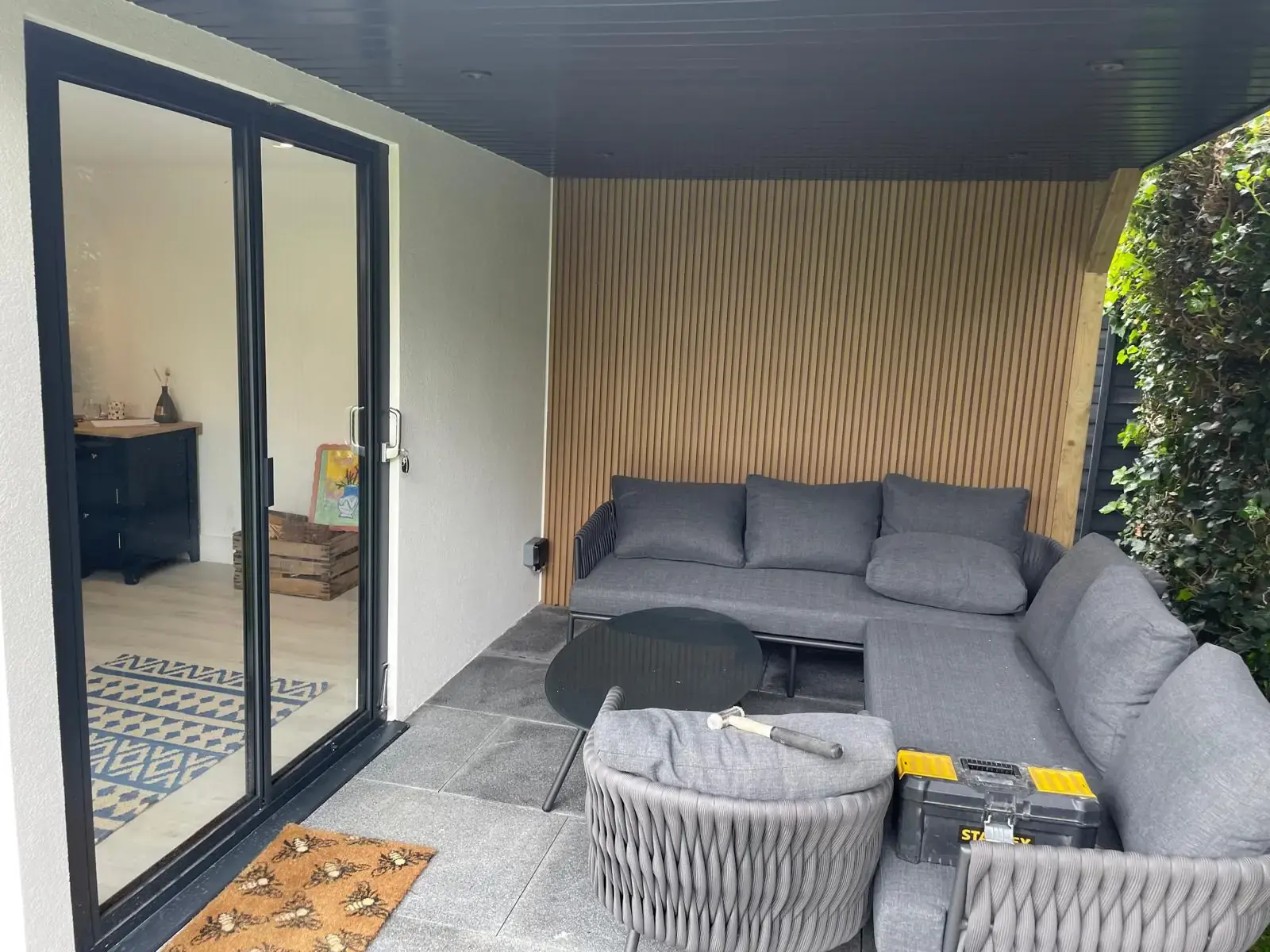
Furniture Arrangement
Thoughtful furniture placement can highlight the benefits of patio sliding doors while ensuring practicality. When planning your layout, consider the door’s opening path and leave ample space for easy movement. A good rule of thumb is to keep at least a metre of clear space in front of the doors.
Large pieces like sofas or dining tables work well when placed parallel to the doors. This arrangement allows for unobstructed views and easy access to the garden or patio. Avoid placing tall furniture directly in front of the doors, as this can block light and views.
For smaller rooms, consider multi-functional furniture that can be easily moved. Lightweight chairs or ottomans can be repositioned to suit different occasions, whether you’re hosting a party or simply enjoying a quiet evening at home. Patio sliding doors often become a focal point, so arrange your furniture to complement, not compete with, this feature.
Lighting and Ambiance
While patio sliding doors bring in plenty of natural light during the day, thoughtful artificial lighting is key for evening ambiance. Layer your lighting to create a warm, inviting atmosphere that extends from your interior to the outdoor area beyond the doors.
One idea would be installing dimmer switches to adjust the light levels as natural light fades. This allows you to maintain a comfortable atmosphere throughout the day and evening. Soft, indirect lighting near the doors can create a gentle transition between indoor and outdoors after dark.
Outdoor lighting is equally important. Well-placed garden lights or lanterns can make your outdoor space visible and inviting even after sunset, effectively extending your living area. This can be particularly effective when viewed through patio slide doors, creating an attractive backdrop for your interior.
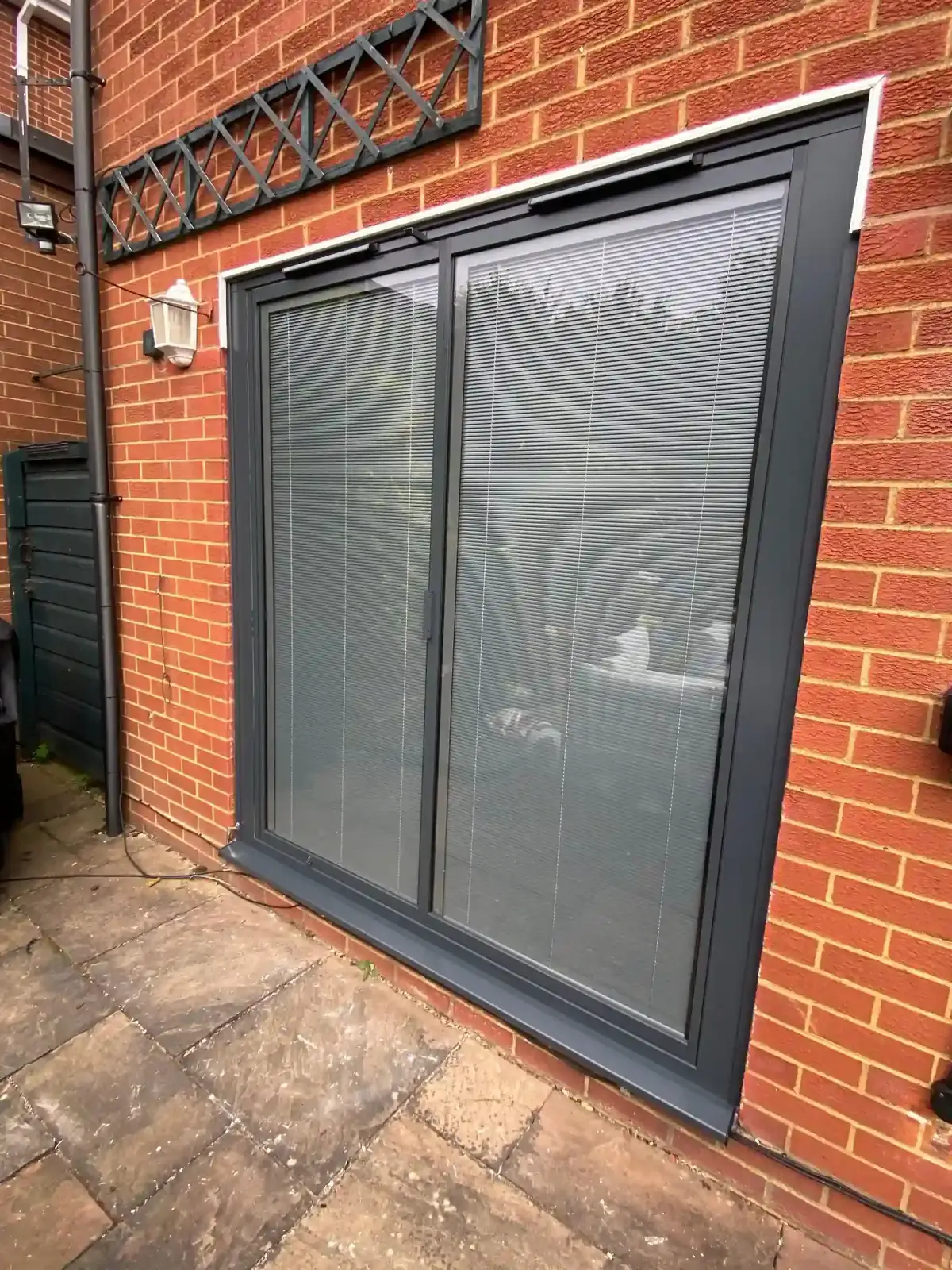
Window Treatments
Choosing the right window treatments for patio sliding doors requires balancing privacy, light control, and aesthetics. Vertical blinds are a popular choice due to their practicality – they’re easy to operate and can be stacked neatly to one side when open. However, they may not suit all decor styles.
Curtains can add a softer touch and are available in a wide range of fabrics and styles to match any interior. When selecting curtains for patio sliding doors, opt for tracks that allow them to be fully drawn back, maximising the view when desired. Sheer curtains can provide privacy without blocking light, while heavier drapes offer better insulation and light control.
For a more modern look, consider roller or Roman blinds. These can be made from light-filtering or blackout fabrics, offering flexibility in light control. Some manufacturers offer patio sliding doors with integrated blinds sealed between the glass panes, which can be a low-maintenance option.
Creating a Connection with the Garden
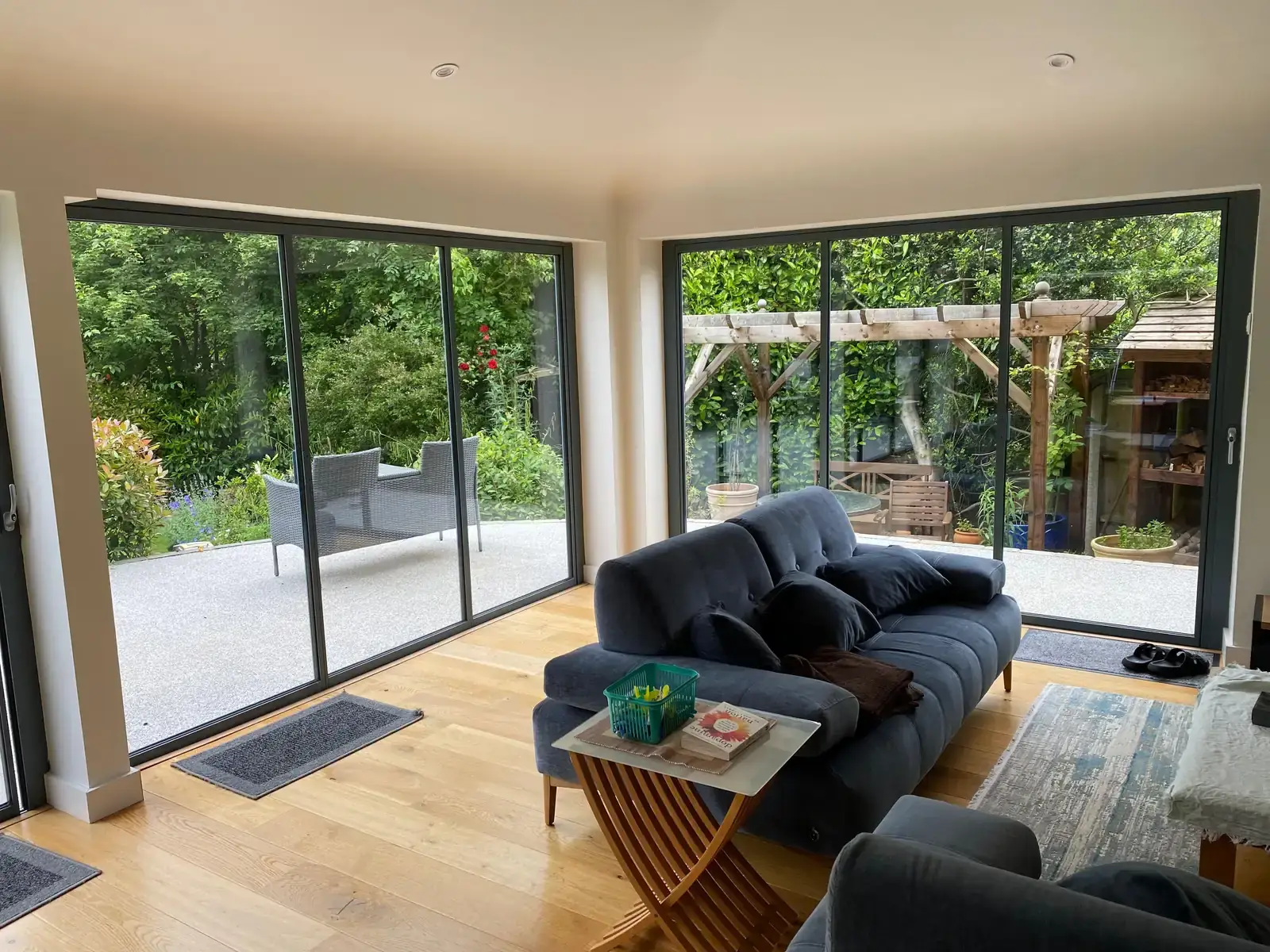
Flooring Continuity
Choosing complementary flooring for your indoor and outdoor areas can help make your room feel larger. For instance, if you have wooden floors inside, consider decking or wood-effect tiles for your patio area.
Stone or tile flooring works well both indoors and out, offering durability and a seam-less look. Options like porcelain tiles are available in finishes suitable for both interior and exterior use, allowing you to use the same material throughout. Remember to ensure any outdoor flooring is slip-resistant and can withstand local weather conditions.
When selecting flooring, think about how it will look through your patio slide doors when closed. The visual connection remains important even when the physical barrier is in place. Choose colours and textures that complement each other and your overall design scheme.
Outdoor Living Areas
Creating comfortable seating and dining areas near sliding back doors encourages the use of outdoor spaces. Position furniture to take advantage of the views from inside, and vice versa. A well-placed outdoor sofa or dining set can serve as a natural extension of your interior living space.
Consider adding elements that mirror your indoor decor in your outdoor area. This might include similar colour schemes, complementary furniture styles, or echoing patterns in cushions and rugs. Such details can help create a cohesive look when viewed through your patio sliding doors.
Weather-resistant fabrics and materials have come a long way in recent years. You can now find outdoor furnishings that are both durable and stylish, allowing you to create inviting spaces that withstand the British climate. Don’t forget to include adequate lighting to make your outdoor area usable after dark.
Plant Selection
Consider placing potted plants near your patio sliding doors, both inside and out.
Choose plants that thrive in your local climate and complement your interior style. Large leafy plants can create a lush, tropical feel, while structured topiary adds a more formal touch. Remember to check the view through your patio sliding doors when positioning plants outside.
Vertical gardening techniques, such as living walls or trellises, can be particularly effective near patio sliding doors. They add visual interest without taking up floor space and can provide privacy if needed. These plantings can create stunning natural views, visible both from inside and when using your outdoor space.
Outdoor Kitchens
For those who enjoy alfresco dining, an outdoor kitchen near patio sliding doors can be a game-changer. It allows for easy movement between indoor and outdoor cooking areas, making entertaining a breeze. When planning an outdoor kitchen, consider its visibility from inside and how it complements your interior.
Choose materials for your outdoor kitchen that coordinate with your interior and can withstand the elements. Options like stainless steel appliances and stone countertops offer durability and style. Remember to include adequate storage to keep cooking essentials close at hand.
Lighting is very important in an outdoor kitchen. Ensure you have task lighting for cooking areas and ambient lighting for dining spaces. This not only improves functionality but also creates an inviting atmosphere visible through your patio sliding doors after dark.
Performance and Practicality of Patio Sliding Doors
Energy Efficiency Ratings
Energy efficiency is a top priority for many homeowners. Patio sliding doors play a big role in a home’s thermal performance. Double-glazed units are standard in most patio sliding doors, offering good insulation. For those seeking extra efficiency, triple-glazing is an option, though it comes at a higher cost. Low-emissivity (low-E) glass coatings can further improve insulation by reflecting heat back into the room.
Frame material also affects energy efficiency. uPVC and timber frames typically offer better insulation than aluminium. However, modern aluminium frames with thermal breaks have improved significantly. When shopping for patio door systems, compare the overall U-value (a measure of heat loss) to find the most efficient option for your budget. The smaller the U-value, the better the insulation.
Security Features
Security is paramount when it comes to any entry point in your home. Most quality doors come with multi-point locking mechanisms that secure the door at various points along the frame.
Look for patio sliding doors that meet PAS 24 standards, which indicate they’ve passed specific security tests. Toughened or laminated glass adds an extra layer of security, as it’s more difficult to break than standard glass. Some manufacturers offer additional features like anti-lift mechanisms to prevent the door from being lifted off its tracks.
Noise Reduction
If you live in a noisy area, the sound insulation properties of your patio sliding doors become important. The glass type and thickness, as well as the quality of the seals, all contribute to noise reduction. Double or triple-glazed units with different glass thicknesses can be particularly effective at dampening sound.
Some manufacturers offer specific acoustic glass options for patio sliding doors in noise-sensitive locations. While these can be more expensive, they can make a noticeable difference in your home’s comfort level. Remember, the installation quality is just as important as the door itself for effective sound insulation.
Weather Resistance
British weather can be unpredictable, so your patio sliding doors need to stand up to various conditions. Look for doors with high-quality weatherstripping to prevent drafts and water ingress. The threshold design is particularly important – some systems offer low-threshold options for easier access while still maintaining good weather sealing.
Proper drainage is another key factor in weather resistance. Quality patio sliding doors should have built-in drainage channels to direct any water that does get past the seals safely away from your home. This helps prevent water damage and potential mold issues over time.
From Selection to Installation
Measuring and Ordering
Accurate measurements are vital when ordering patio sliding doors. Even small errors can lead to ill-fitting doors, affecting their performance and appearance. While you can take initial measurements yourself, it’s wise to have a professional do the final measuring.
Consider the opening mechanism when measuring. Patio slide doors need space to operate, so account for any obstacles like furniture or radiators. Also, think about the threshold height – low threshold sliding doors offer easier access but might provide less weather protection.
When ordering, you’ll need to specify not just size, but also frame material, glass type, colour, and any additional features. Take your time with these decisions, as they’ll affect both the look and function of your patio sliding glass doors.
Long-Term Care
Regular cleaning is important – wipe down frames and glass, and keep the tracks free of dirt and debris. This prevents build-up that could affect the doors’ smooth operation. Lubricate moving parts periodically, following the manufacturer’s recommendations. This keeps your patio slide doors operating smoothly and can prevent wear on the mechanisms. Check weatherstripping and seals annually, replacing them if they show signs of wear. If you notice drafts, difficulty in operation, or condensation between glass panes, address these issues promptly.
Patio Sliding Door FAQ
Can patio sliding doors be recycled at the end of their life?
Yes, many components of patio sliding glass doors can be recycled at the end of their life. Glass panels can be recycled into new glass products, while aluminium doors are particularly recyclable, with the material being able to be reprocessed indefinitely without losing quality. uPVC frames can also be recycled, though the process is more complex. It’s best to consult with a specialist recycling facility for proper disposal.
What materials are patio sliding glass doors made from?
Patio sliding doors are commonly made from uPVC, timber, or aluminium. Each material has its own benefits: uPVC is low-maintenance and cost-effective, timber offers a classic look and good insulation, while aluminium provides strength and slim profiles. The choice of material can affect the types of patio doors available, as well as their performance, aesthetics, and price point.
How many panels can patio sliding doors have?
patio sliding glass doors can have anywhere from two to six panels, depending on the width of the opening and the desired design. Large sliding glass patio doors with multiple panels are popular for creating wide openings that blur the line between indoor and outdoor spaces. The number of panels also affects how the door operates, with some configurations allowing for multiple sliding panels.
What's the environmental impact of patio sliding doors?
The environmental impact of patio sliding doors depends on factors such as materials used, manufacturing process, energy efficiency, and disposal methods. High-quality, energy-efficient doors can help reduce a home’s energy consumption, potentially offsetting their production impact over time. The longevity of the doors and their recyclability at end-of-life also contribute to their overall environmental footprint.
What are some alternatives to patio sliding doors?
Alternatives include French doors, bi-fold doors, and slide and stack doors. French doors open outwards on hinges, offering a traditional look. Bi-fold doors concertina to one side (hence why they’re also known as concertina doors), allowing for a very wide opening. Slide and stack doors combine sliding and pivoting mechanisms, offering flexibility in how the space is opened up.
We’d Love to Help You
Vision Glass Doors is a designer, manufacturer, and installer of premium door systems. We are a family run business with over 20 years’ experience and 5,000 installations across the UK.
Our leading range of door systems include Ultra Slim – Slide and Turn Doors, Slimline Sliding Patio Doors and Frameless Glass Doors. Suitable for various internal and external applications, they are applicable to residential and commercial projects.
Click Quick Quote Online for a free quotation within 24 hours. Alternatively, call or email us on 01582 492730 or at info@visionglassdoors.co.uk.

